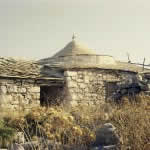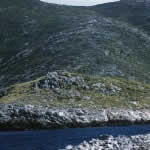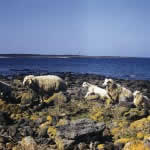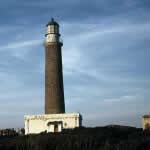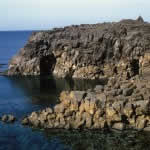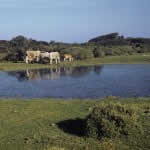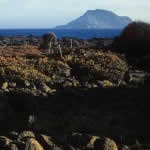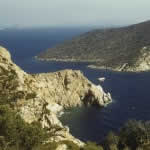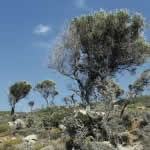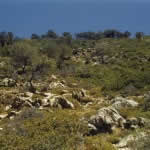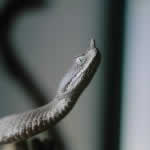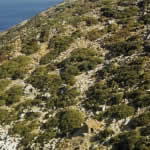For the main islands and conservation objectives a total of 20 articles has been published so far. Now some additional locations are presented: Pappoù and Grámsa islands; Psathoúra and Mikro Psathoúra; the two Adélphia islands.
The small islands Pappoù, Strongýli and Grámsa are located between Kyra Panagià and Gioúra. All three are infested by feral rabbits. Only after their complete extermination the plant communities, or rather the remains of it, can recover.
Fishermen talked about the existence of a small ruined church on the central elevation of Grámsa.
The church on Pappoù has been described by Dr. Alexis Alexiou in his well illustrated publication of 2007, Alonnisos: The architecture of the post – byzantine monuments. Relics of simple monk cells (kellia), a threashing plattform and a cistern suggest the former authark subsistence of a monastic community on this very confined island. The sea level underwent marked changes, though, also within the range of human habitation in this region (cf. the article Gioura – civilization over 10.000 years). Consequently, the size of this flat isle was subject to considerable changes as well.
In the framework of conservation and compatible development activities relating to the marine conservation area Northern Sporades, I propose a re-construction of the material culture on Pappoù, as a research and touristic demonstration programme of exemplary significance – a sunken Garden of Eden.
Psathoúra and Mikrò Psathoúra, are both of volcanic origin. The very hard lava rock was used for making mill-stones (also for export to places outside the Northern Sporades, eg. to Thássos Island in antique times) and building houses. There are rumors of a „sunken city“ offshore, but without scientific evidence so far. The light house on Psathoúra was erected in 1895 – it is one of the tallest (28,90 m) in the Mediterranean realm, an impressive monument that could also attract tourists (guided tours).
During the migrating season, large number of birds rest at the shallow lakes that build up in depressions of the non-permeable underground.
The two Adélphia islands just opposite Alonnisos are owned and leased to goat herders by the community.
Until the end of last century the browsing effects were moderate; conspicuous erosion and damage to the wild olive trees only occurred recently. The communal authority and the marine park management should collaborate to take off the destructive browsing and give the islands ecosytems the means to recover.
On both these small islands a dwarf variety of poisonous vipers (Vipera ammodytes) was discovered by us in 1957. One specimen bit me without any serious health complications.These vipers feed mainly on grasshoppers during the dry summer season.
